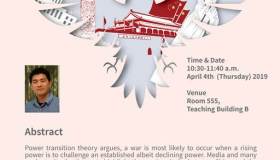November 11th LHS Academic Seminar
Topic
How nature changed a reaction mechanism from hydrolysis to elimination: evolution of esterases to lyases
Abstract
Enzymes within a superfamily often catalyze different, but related, reactions. For example, esterases and amidases in the α/β-hydrolase-fold superfamily catalyze the hydrolysis of carboxylic acid derivatives using similar catalytic steps. One can imagine gradual steps to evolve an esterase into an amidase.
In other cases, enzymes within a superfamily catalyze unrelated reactions. The α/β-hydrolase-fold superfamily also contains hydroxynitrile lyases (HNL's), which catalyze the addition of cyanide to aldehydes to form cyanohydrins [1]. The mechanism for this addition differs from hydrolysis and gradual steps to evolve an esterase to an HNL are hard to imagine. Understanding this path would aid the engineering of enzymes to catalyze new reactions.
We reconstructed ancestral enzymes in the evolution of hydroxynitrile lyases from esterases [2]. Several ancestral enzymes were esterases with esterase-like catalytic residues, one ancestral enzyme was a hydroxynitrile lyase with HNL-like catalytic residues. Changes in both catalytic steps and substrate orientation contribute to the shift in activity.
References
1) Rauwerdink, A.; Kazlauskas, R. J., ACS Catal., 2015, 5, 6153-76.
2) Devamani, T. et al., J. Am. Chem. Soc., 2016, 138, 1046-56.
Biography
Romas Kazlauskas is professor in Dept. of Biochemistry, Molecular Biology and Biophysics & The Biotechnology Institute, University of Minnesota, Twin Cities.
Romas Kazlauskas has studied catalysis since his college days when he worked at company that made catalysts for paint drying. During his Ph.D. studies at the Massachusetts Institute of Technology, he studied organometallic catalysts, then switched to biocatalysis during his postdoctoral studies with George Whitesides at Harvard University. He has worked in industry - General Electric Company on biocatalysis to make monomers for plastics. He worked for 15 years at McGill University in Montreal, Canada and has worked at the University of Minnesota since 2003. He has been a visiting professor in Germany, Sweden and South Korea. His current research interests are engineering enzymes for synthesis of pharmaceuticals & fuels.
Special thanks to
Ganghong Young Scholar Development Fund for the generous support




